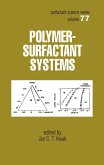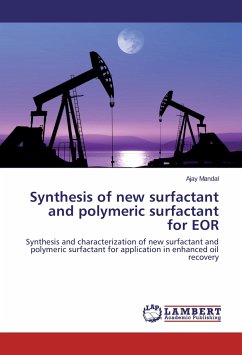1 Nature of Surfactants.- 1.1 Introduction to surfactants.- 1.2 Natural surfactants.- 1.3 Synthetic surfactants.- 1.4 Types of surfactant.- 1.4.1 Hydrophilic groups.- 1.4.2 Hydrophobic groups.- 1.5 Surface activity.- 1.5.1 Self-association.- 1.5.2 The hydrophobic effect.- References.- 2 Adsorption at liquid interfaces.- 2.1 Introduction.- 2.2 Direct measurement of amount adsorbed.- 2.3 Adsorption studied via surface and interfacial tension measurement.- 2.4 Adsorption of ionic surfactants.- 2.4.1 No added electrolyte.- 2.4.2 Ionic surfactant with excess electrolyte.- 2.5 Equations of state for adsorbed surfactants.- 2.6 Adsorption at the liquid/liquid interface.- 2.7 Ultra-low interfacial tensions.- 2.7.1 Prediction of emulsion type from packing geometry.- 2.7.2 Phase inversion.- 2.7.3 Tensions at curved and planar interfaces.- 2.7.4 Interactions between adsorbed monolayers.- 2.7.5 Practical applications of ultra-low tension systems.- 2.8 Physical properties of adsorbed monolayers.- 2.9 Dynamic aspects of adsorbed surfactants.- 2.9.1 The Marangoni effect.- References.- 3 Insoluble monolayers.- 3.1 Introduction.- 3.2 Historical background.- 3.2.1 The Langmuir trough and its origin.- 3.2.2 Use of the Langmuir trough.- 3.3 Phase changes and types of film.- 3.3.1 Gaseous films.- 3.3.2 The LE + G region.- 3.3.3 The liquid-expanded region.- 3.3.4 The transition region.- 3.3.5 The liquid-condensed region.- 3.3.6 The solid region.- 3.4 Ionised monolayers.- 3.4.1 Effect of polyvalent counterions.- 3.5 X-ray and neutron scattering.- 3.5.1 Horizontal scattering.- 3.5.2 Vertical scattering.- 3.5.3 Neutron scattering.- 3.6 Dynamic effects.- 3.6.1 Interfacial shear rheology.- 3.6.2 Interfacial dilatational rheology.- 3.6.3 Measurement of surface shear viscosity for insoluble monolayers.- 3.6.4 Measurement of surface dilatational rheological properties.- 3.7 Practical applications of insoluble monolayers.- References.- 4 Langmuir-Blodgett multilayers.- 4.1 Introduction.- 4.2 Historical background.- 4.3 Types of monolayer deposition.- 4.3.1 X-, Y- and Z-films.- 4.3.2 Incomplete deposition.- 4.3.3 Asymmetrical films.- 4.3.4 Polymeric systems.- 4.4 Structure of multilayers.- 4.4.1 Characterisation by simple techniques.- 4.4.2 Low-angle X-ray diffraction.- 4.4.3 Spectroscopic methods.- 4.4.4 Long-range order and homogeneity.- 4.5 Applications of LB films.- 4.5.1 Devices exploiting the insulating properties of the film.- 4.5.2 Applications combining ultra-thin property with useful chemistry.- 4.5.3 Multilayers requiring non-centrosymmetrical structures.- 4.5.4 Supermolecular assemblies and molecular electronics.- 4.5.5 Sensors.- 4.6 Self-assembly systems.- 4.6.1 Self-assembly monolayers.- 4.6.2 Self-assembly multilayers.- References.- 5 Micelle formation.- 5.1 Evidence for micelle formation.- 5.2 Structure of micelles.- 5.2.1 Hartley's model for spherical micelles.- 5.2.2 Simple geometric factors.- 5.2.3 Spherical micelles.- 5.2.4 Cylindrical micelles.- 5.2.5 Counterion binding.- 5.3 Dynamics of micellar aggregation.- 5.3.1 The multiple equilibrium model.- 5.4 The critical micelle concentration (CMC).- 5.4.1 Ionic surfactants.- 5.4.2 Non-ionic surfactants.- 5.4.3 Factors affecting the CMC.- 5.4.4 Methods for measuring the CMC.- 5.5 Thermodynamics of micelle formation.- 5.5.1 Simple thermodynamic theory.- 5.5.2 Experimental data for the thermodynamic parameters of micellisation.- 5.5.3 Mechanism of micelle formation.- 5.6 Solubilisation.- 5.6.1 Polar solubilisates.- 5.6.2 Effect of temperature and electrolyte addition.- 5.7 Applications of micellar solutions.- 5.7.1 Detergency.- 5.7.2 Application of cylindrical micelles.- 5.7.3 Solubilisation.- 5.7.4 Micellar-enhanced ultrafiltration.- 5.7.5 Micellar catalysis.- References.- 6 Mixed-micelle formation.- 6.1 Qualitative observations.- 6.2 Thermodynamics of mixed-micelle formation.- 6.2.1 Surface tensions of surfactant solutions.- 6.3 Thermodynamics of non-ideal mixed-micelle formation.- 6.3.1 Mix...
Hinweis: Dieser Artikel kann nur an eine deutsche Lieferadresse ausgeliefert werden.
Hinweis: Dieser Artikel kann nur an eine deutsche Lieferadresse ausgeliefert werden.








